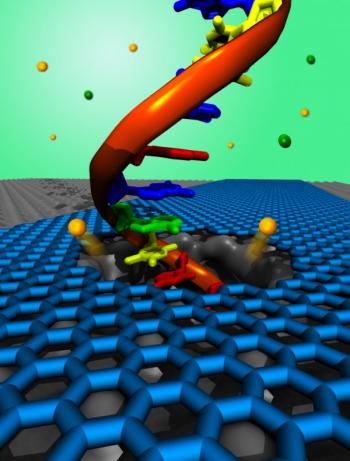The National Institutes of Health (NIH) awarded a $880,000 grant for a University of Pennsylvania 2-year project that aims to develop fast and cost-effective genome sequencing. The project uses the DNA translocation process which threads DNA through nanopoers in a thin membrane - in this case a graphene nanoribbon (GNR) membrane.

A GNR is very useful for sequencing because it's thin and strong, and also its electrical properties enable to read the bases signals directly from the membrane as the DNA passes through the pore. We posted about this project last year, and it's great to see them receive more funding.
There are several other research groups attempting to use graphene for DNA sequencing. Harvard University developed a technology that is being commercialized by Oxford Nanopore, and in March 2012 researchers from the University of Delaware released a study that used computer simulation that shows how graphene nanopores can be used to detect the presence of different DNA bases.

